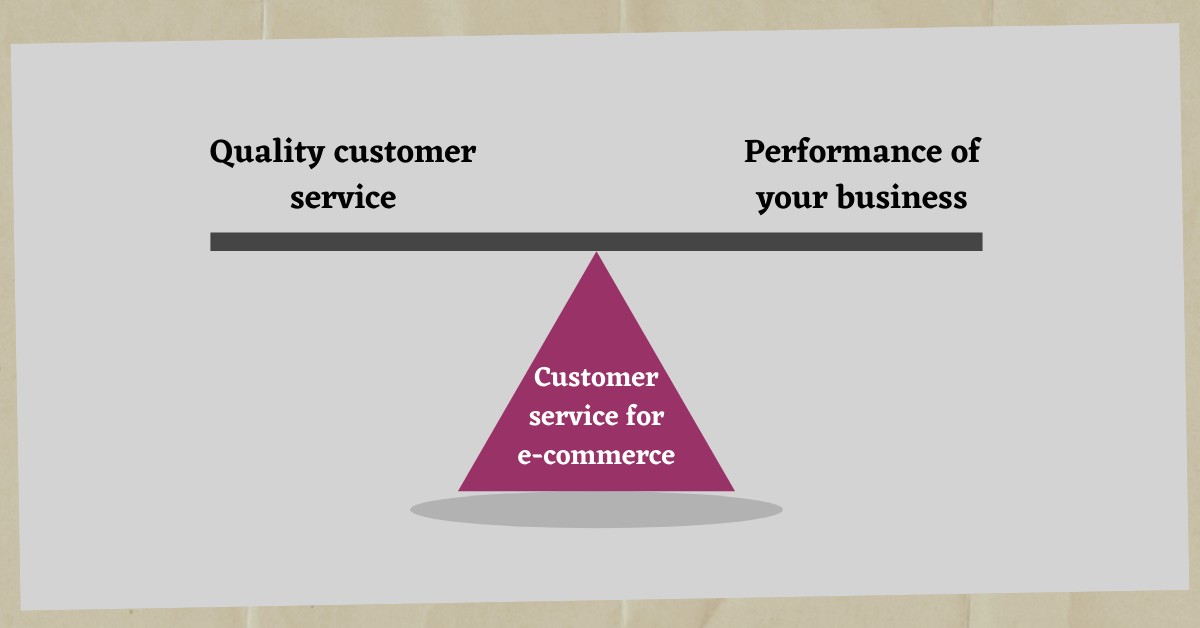Customer support in e-commerce refers to the services you offer to online shoppers. If visitors have questions or need help with making a purchase, these features will help them navigate your site and attain their objectives. Customer Service in e-commerce allows representatives to meet customers whenever and wherever they want to make the support process go smoothly and efficiently.
The customer service business strategy in e-commerce is significantly different from brick-and-mortar environments. Since reps can only call or talk, you need to predict roadblocks that users will face during the buying process. It requires you to consistently get feedback from the customer and analyze it for common user pain points.
If you’re trying to boost the service in your online store, take a look at the next segment for some of the best e-commerce customer service practices we have gathered.
Best practices in e-commerce customer service:
It can be difficult for many businesses to provide outstanding customer service in an e-commerce environment. That’s because when you’re not interacting face-to-face, it can be hard to engage with them. The tips in this section can help you overcome those obstacles for the customer service of your e-commerce business and delight your online store visitors.

1. Use social media for customer service:
When providing Customer service, use social media with pace and effectiveness as it is the customer’s primary priority and also since social media is a valuable tool and acts as a platform for customer support in e-commerce and business. Customers may use social media to report issues or pose questions that will alert the support team immediately.
Your representatives can then address the issue and reach out to all of your customers and update them at once. This omnichannel experience makes it easier for online shoppers to get in contact with your customer service team rather than funneling inquiries through one communication channel.
2. Providing proactive assistance for customers:
It is necessary to provide proactive assistance in customer service for e-commerce. When customers surf through your e-commerce website, they may not be aware of your support and service features. They might have questions but have no idea where to ask. And, they can conclude that contacting help is too much work and go on to a competitor. Even if your site offers service features, the proactive sharing of them with your customer base is vital.
By creating CTA’s on your website, you can implement proactive customer service. Make it clear where users can file inquiries about help and include FAQs on what they should expect from your service team. If you have a live chatbot, create a pop-up message that draws the attention of your visitor to the chat widget. It will allow visitors to take advantage of your service features that build opportunities to connect and delight clients.
3. Focus on your average response time:
Consumers prefer shopping online, as it is efficient and convenient. They can conveniently compare product prices and order products right at their front doorstep. When customers have questions, though, they expect that inquiries will be acknowledged effortlessly. When they come to your site for a quick purchase, they don’t want to wait for the answers. Therefore, when working with e-commerce customers, it is crucial to focus on average response times.
When visitors reach out, representatives should answer in seconds. Tools such as live chat and chatbots will boost your average response time and streamline the user’s support process. Customers are less likely to get distracted and navigate away from your site by reducing the time it takes for them to get an answer. Therefore, in e-commerce, it is very crucial to focus on your average response time for better customer service business.
4. Include self-service solutions for the customers:
In customer service for e-commerce, another efficient way of delivering answers to customers is by using self-service apps of the customers. They are resources that consumers use to find solutions to their issues without a service rep. In this way, it will save them time from having to open a formal enquiry when consumers have simple or easy questions.
Self-service is one example of a knowledge base. A knowledgebase is a portion of the website containing documents relating to service and support. These resources discuss common roadblocks for customers that users experience every day. Before reaching your service team, customers can review those references.
5. Provide a phone support line to customers:
Most customers don’t have the patience to take advantage of online support services. Speed and efficiency are crucial in e-commerce settings, and consumers who aren’t tech-savvy aren’t interested in looking for answers to your web. When necessary, offer phone help, and give specific users a direct line to the service team.
Even if you don’t have a call center software or a designated phone team, it can dramatically improve the customer experience by having a direct channel to create a live interaction. For efficiency, it is necessary to provide a phone support line in the customer service business.

Conclusion:
In customer service for e-commerce, your customer service quality has a tremendous impact on the performance of your business. Therefore, developing a plan to ensure customers have a smooth experience with you is vital. Customer care has a firm connection with the overall experience of the customer. It has a mouth impact phrase, which is vastly essential for e-commerce business. To learn more about how to perfect the Customer Service of your e-commerce business, drop an e-mail to contactus@kloudportal.com




